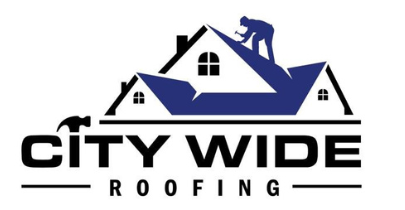Residential roofing is a crucial component of a home’s overall structure, protecting you and your family from the elements. But how do you know when it’s time to replace it? In this article, we’ll dive into the 411 on residential roofing replacement. From signs that your roof is due for a replacement to tips for selecting the right roofing contractor, we’ll cover everything you need to know to make an informed decision about your roof. So let’s get started!
How To Know If It’s Time To Replace Your Residential Roofing
Replacing your residential roofing is a significant decision that requires careful consideration. Delaying the process for too long can result in further damage and increased expenses. So, how can you tell if it’s time for a roof replacement? Here are some common signs to keep an eye out for:
Age of the roof: As your roof ages, it becomes more vulnerable to damage and wear and tear. Most roofs have a lifespan of 20 to 25 years, depending on the type of material used and how well it has been maintained. If your roof is nearing or has surpassed this age, it’s a sign that you should start thinking about a replacement to avoid potential damage and expenses down the line.
Damage to the shingles or roofing material: If your roof has cracks, missing shingles, or other types of damage, it may be time to consider a replacement. This damage not only compromises the aesthetic of your home but can also lead to more serious problems like leaks and water damage if not addressed promptly. Don’t let your damaged roof rain on your parade – it’s time to take action!
Sagging or dipping in the roof: A drooping or sagging roof could be an indication of a more severe underlying issue that calls for a replacement. This can also cause water to accumulate and further increase the risk of leaks and other problems. It’s best to consult with a roofing professional to determine the extent of the damage and the necessary course of action.
Leaks or water damage: If you start seeing water spots on your ceiling or walls, it might be an indication that your roof is leaking. Ignoring these leaks could lead to more serious problems, such as significant water damage and structural issues within your home.
Energy inefficiency: If you’re finding yourself with higher energy bills than usual, your roof might be the culprit. Your roof plays a significant role in providing insulation to your home, and if it’s not doing its job, you’ll see the difference in your wallet. This could be a sign that your roofing material has worn down over time or that there are gaps and holes in your roof that are letting in drafts.
Keep an eye out for these signs to determine if it’s time to replace your residential roofing.
Factors that impact the lifespan of residential roofing
Your residential roofing lifespan can be affected by various factors, with the type of roofing material being one of the most significant. Materials like metal or slate can endure for over 50 years, while others, like asphalt shingles, have a shorter lifespan of around 20-25 years. It’s essential to choose a durable and high-quality roofing material that can withstand your area’s climate and weather conditions.
The weather conditions in your area can also have a significant impact on the lifespan of your residential roofing. Heavy rainfall, snow, and high winds can gradually wear down your roof over time, while extreme temperatures can cause materials to expand and contract, resulting in cracks and other types of damage.
Proper installation and maintenance are also important factors that can affect the lifespan of your residential roofing. Hiring a qualified contractor who can ensure that your roof is installed correctly and structurally sound can help extend its lifespan. Regular maintenance, such as inspections and repairs, can also prevent minor issues from turning into major problems, saving you money and prolonging the life of your roof.
Over time, prolonged exposure to sunlight can also impact the condition of your residential roofing materials. This is especially true if your roof is constantly exposed to direct sunlight. The sun’s UV rays can cause materials to break down and become brittle, which can ultimately lead to cracks and leaks. It’s important to consider the amount of sun exposure your roof receives when evaluating its condition and lifespan.
How often should you replace your residential roofing?
Determining when to replace your residential roofing can be a tricky task, but there are some general guidelines that can help. Depending on the type of roofing material, the average lifespan can vary anywhere from 20 to 50 years. However, it’s important to assess the condition of your roof regularly to determine if it needs to be replaced sooner. Factors such as age, damage, and wear and tear should be taken into consideration when deciding whether or not to replace your roof. The best way to know for sure if you need to replace your residential roofing, is to contact a trustworthy roofing contractor such as City Wide Roofing.


